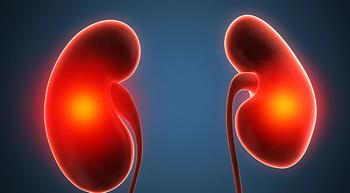
Long-Term Outcomes Support NCCN Guidelines for Prostate Cancer
Key Takeaways
- Patients with nonmetastatic prostate cancer are more likely to die from other causes than from cancer when treated per guidelines.
- The 15-year cancer mortality risk is 5.5% for low-risk and 22% for very high-risk patients.
Patients with nonmetastatic prostate cancer treated according to NCCN Guidelines are more likely to die of other natural causes than from their cancer.
Patients with nonmetastatic prostate cancer who are treated according to current guidelines are nearly six times more likely to die of other natural causes than from their cancer, according to research published in the "Journal of the National Comprehensive Cancer Network."
This was determined following an assessment of 62,839 men with nonmetastatic prostate cancer who received primary therapy according to the treatment guidelines. Investigators found that the chance of dying from cancer within 15 years was approximately 5.5% in men with low-risk prostate cancer. For men with very high-risk disease though, that chance increased to 22%. When evaluating these patients over a longer period of time (30 years), the risk of dying from prostate cancer was 12% in those with low-risk cancer and 30% for those with very high-risk cancer.
Contrarily, the risk of dying from other causes like heart disease or other health issues was much higher, ranging from 63% to 77% to during that same timeframe, respectively.
"Men with nonmetastatic prostate cancer who received primary treatment according to current guidelines were up to 6 times more likely to die of other causes than from their cancer. These estimates provide realistic but high expectations of the outcomes of modern treatment and can serve as benchmarks for clinical outcome reporting," first study, Dr. Pietro Scilipoti, and colleagues wrote in their research.
Scilipoti works in the Department of Surgical Sciences, at Uppsala University, located in Sweden.
How Was the Research Conducted?
For patients with prostate cancer who have been treated strictly according to current guidelines, data on long-term outcomes are limited.
To appropriately research this topic, investigators sought to estimate the long-term risk of death in men with nonmetastatic prostate cancer who had received treatment for their disease according to current guidelines. Researchers turned to the National Prostate Cancer Register of Sweden where they identified men with nonmetastatic prostate cancer who were registered from 2000 to 2020. These men had received primary treatment according to the National Comprehensive Cancer Network Clinical Practice Guidelines in Oncology for Prostate Cancer, Version 4.2023, and were followed until December 31, 2022.
Notably, investigators calculated the risk of death from prostate cancer versus risk of death from other causes up to 30 years according to risk category and life expectancy.
“Of 199,620 men diagnosed with prostate cancer and registered in the National Prostate Cancer Register of Sweden between 2000 and 2020, 135,636 had nonmetastatic prostate cancer, a defined risk category, and a life expectancy of [more than] 3 years. Among these, 62,839 [46%] were treated according to National Comprehensive Cancer Network Clinical Guidelines for Prostate Cancer,” investigators noted in their research.
Notably, the most common treatment for this group of patients was the most common treatment was radical prostatectomy (42% of patients), followed by radiotherapy with/without androgen deprivation therapy (22% of patients) and active surveillance (20% of patients).
Additionally, investigators noted that, “The survival analyses included 61,634 [98%] men who were alive on January 1, 2008. At the end of follow-up, 2,636 men [4.3%] had died of prostate cancer, 10,799 [18%] had died of other causes, and 48,199 [78%] were censored.”
What These Outcomes Mean for Patients
The research concluded that the risk of dying due to your prostate cancer, as well as from other causes, varied based on the cancer’s risk level, as well as on a person’s overall life expectancy. For example, among men with low-risk prostate cancer, those expected to live longer had a lower chance of dying from the cancer, whereas those with a shorter life expectancy had a higher risk (ranging from 2.5% to 10%).
Moreover, the risk of dying from other health issues was much higher, ranging from 20% in those with longer life expectancy to 81% in those with shorter life expectancy.
“Men with nonmetastatic prostate cancer who received primary treatment according to current [guidelines] were up to six times more likely to die of other causes than from their cancer,” investigators concluded in their research. “Men with long life expectancy, even those with very high-risk cancer, were twice as likely to die of other causes than from prostate cancer. Our estimates of prostate cancer-specific and other-cause mortality, extending up to 30 years after diagnosis, offer realistic yet high expectations for the outcomes of modern treatment and can serve as benchmarks for clinical outcome reporting.”
For more news on cancer updates, research and education,





